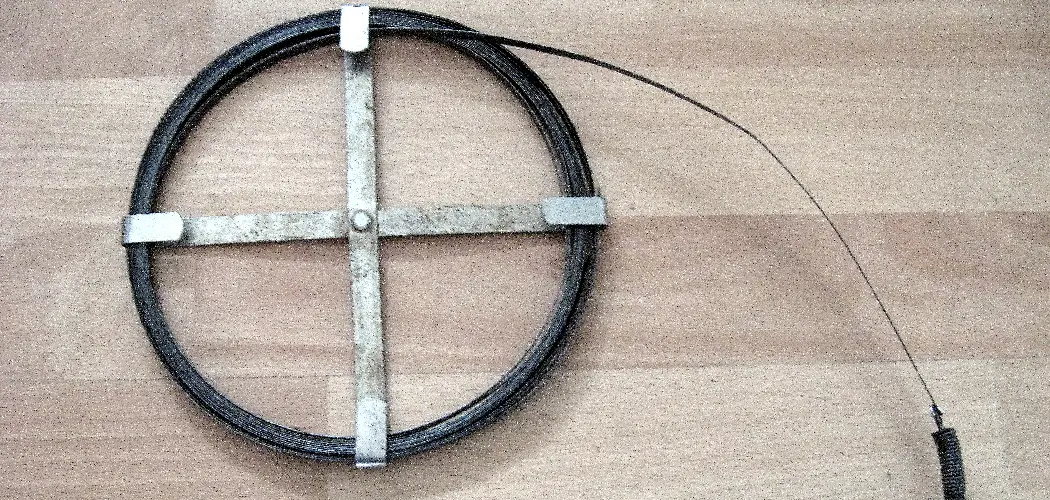Using a flat sewer rod is a fundamental skill for homeowners, plumbers, and maintenance workers tasked with clearing clogs and obstructions from sewer lines and drains. The flat sewer rod, also known as a sewer snake or auger, is a versatile tool designed to navigate through pipes, dislodging debris and blockages to restore proper flow. Unlike traditional round sewer rods, the flat design allows for easier maneuverability around bends and corners in the pipe.
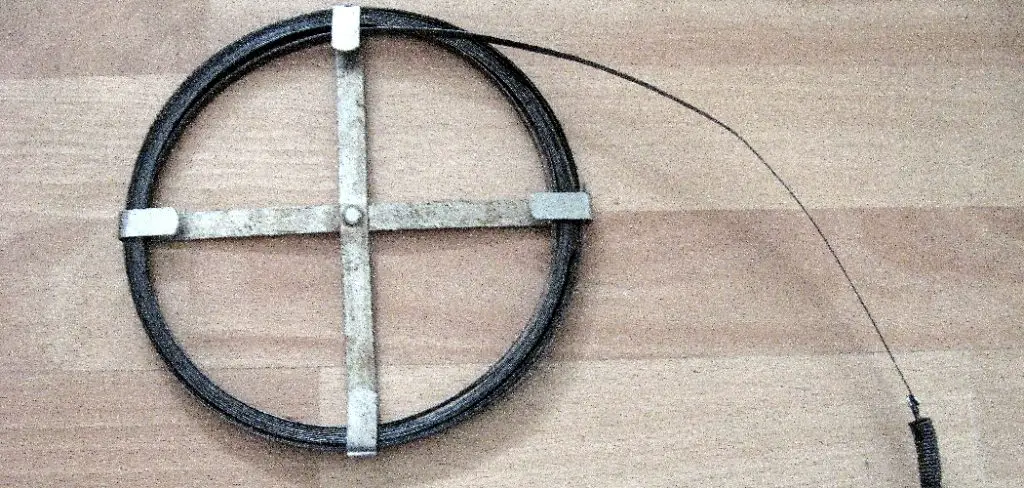
Understanding how to use flat sewer rod effectively involves proper technique, patience, and safety precautions. This guide will walk you through the steps of preparing the sewer rod, inserting it into the drain or sewer line, and using the appropriate techniques to clear clogs and obstructions. Whether you’re dealing with a minor blockage or a stubborn buildup, mastering the use of a flat sewer rod will empower you to tackle sewer and drain issues confidently and effectively.
Importance of Sewer Maintenance and Blockage Removal
Regular sewer maintenance and timely blockage removal are crucial for the smooth operation of your plumbing system. Over time, various debris such as grease, hair, soap scum, and other waste materials can accumulate within the pipes, leading to clogs and backups. These blockages not only disrupt the flow of wastewater but can also result in unpleasant odors, slow drainage, and even sewage leaks or overflows, which pose significant health hazards.
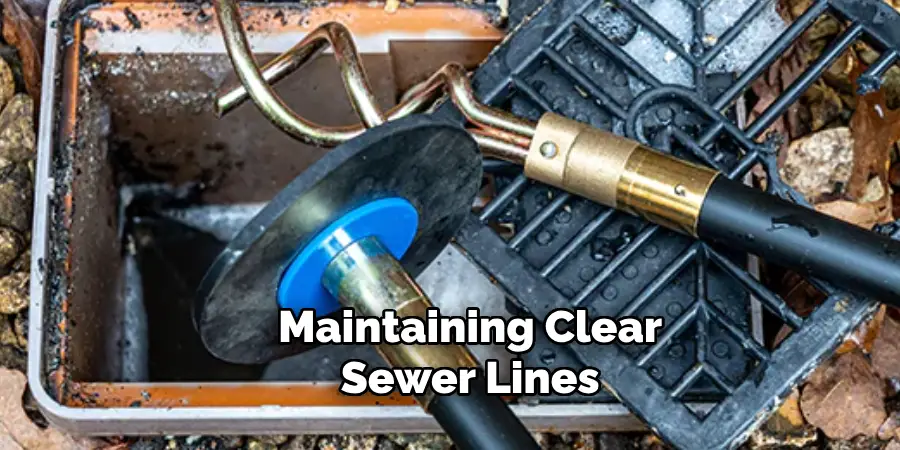
Maintaining clear sewer lines ensures that waste is efficiently removed from your home, preventing potential damage to your property and costly repairs. By integrating routine sewer maintenance into your home care practices, you can safeguard your plumbing system’s integrity, extend its lifespan, and ensure a hygienic living environment.
Understanding Flat Sewer Rods
Flat sewer rods are indispensable tools in plumbing due to their unique design and functionality. Typically made from durable steel, these rods are flat and narrow, which allows them to navigate through tight and convoluted pipe systems with ease. The flat surface provides flexibility and bendability, helping the rod to move around corners and bends without getting stuck or causing damage to the pipe.
At the end of the rod, a cleaning attachment or cutting head can be affixed, which helps in breaking up and removing obstructions ranging from small debris to more substantial build-ups. Additionally, flat sewer rods often come in varying lengths, allowing them to reach deeper into the plumbing system compared to other tools. Understanding the physical characteristics and the application of flat sewer rods is vital for anyone looking to maintain clear and functional sewer lines effectively.
10 Methods How to Use Flat Sewer Rod
1. Understanding the Flat Sewer Rod
Before using a flat sewer rod, it’s essential to understand its design and function. A flat sewer rod consists of a thin, flat strip of steel with a pointed tip at one end and a handle or crank at the other. The flat design allows the rod to navigate through tight bends and narrow pipes, making it ideal for clearing obstructions in drain lines. Familiarizing yourself with the components and operation of the flat sewer rod is the first step in using it effectively.
2. Identifying the Location of the Blockage
Before inserting the flat sewer rod into the drain, it’s crucial to identify the location of the blockage. Determine which drain or sewer line is affected and locate the access point nearest to the blockage. This may be a cleanout fitting, drain opening, or vent stack. Identifying the location of the blockage helps you target your efforts and ensures that the flat sewer rod reaches the obstruction effectively.
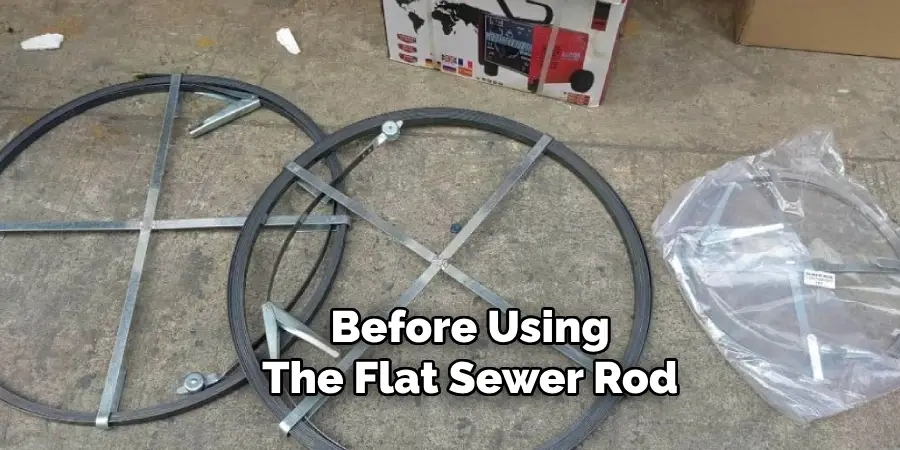
3. Preparing the Rod
Before using the flat sewer rod, prepare it for insertion into the drain. Ensure the rod is clean and free of any dirt, debris, or rust that could interfere with its operation. Check the rod for any signs of damage, such as bends or kinks, and straighten it if necessary. Attach any necessary accessories, such as a crank handle or pulling eye, to the end of the rod. Proper preparation of the rod ensures smooth operation and effective clearing of the drain line.
4. Inserting the Rod into the Drain
With the rod prepared, carefully insert it into the drain opening or access point. Guide the pointed tip of the rod into the drain pipe and push it forward slowly and steadily. Use gentle pressure to navigate through bends and curves in the pipe, being careful not to force the rod too aggressively. Advance the rod gradually until you encounter resistance, indicating the presence of the blockage. Inserting the rod into the drain requires patience and precision to avoid damaging the pipe or worsening the obstruction.
5. Turning the Rod to Break Up the Blockage
Once the rod encounters the blockage, use the handle or crank to rotate it clockwise. The rotational motion helps break up the obstruction and dislodge it from the walls of the drain pipe. Apply steady pressure as you turn the rod, but avoid excessive force, which could cause damage to the pipe. Continue rotating the rod until you feel the obstruction give way and the rod moves freely through the pipe. Turning the rod effectively breaks up the blockage and clears the drain line.
6. Pulling Out the Rod
After breaking up the blockage, carefully withdraw the rod from the drain pipe. Use the handle or crank to pull the rod back slowly, guiding it out of the pipe to avoid snagging or causing further damage. As you pull out the rod, inspect the tip and sides for any debris or residue that may have been dislodged from the blockage. Pulling out the rod allows you to assess the effectiveness of the clearing process and ensure that the drain line is fully cleared.
7. Flushing the Drain
Once the flat sewer rod has been removed from the drain, flush the drain line with water to remove any remaining debris or residue. Turn on the faucet or use a hose to run water into the drain for several minutes, allowing it to flow freely through the pipe.
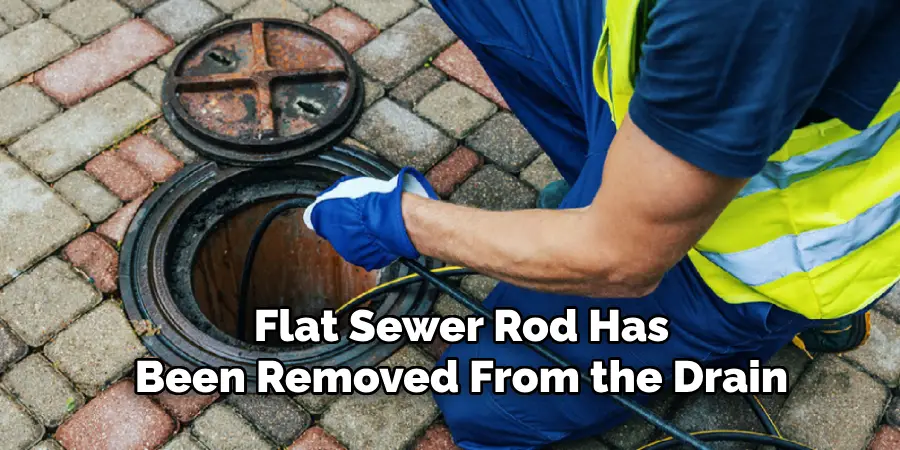
Flushing the drain helps wash away loosened debris and ensures that the drain line is clear and functioning properly. It also helps prevent future blockages by removing buildup from the pipe walls.
8. Inspecting the Drain Line
After clearing the drain line with the flat sewer rod, inspect the drain pipe and surrounding area for any signs of damage or recurring issues. Look for leaks, cracks, or other abnormalities in the pipe, as well as any signs of water damage or mold growth. Check for any remaining obstructions or buildup that may require further attention. Inspecting the drain line allows you to identify and address any underlying issues that could lead to future problems.
9. Using Protective Gear
When using a flat sewer rod, it’s essential to protect yourself with appropriate safety gear. Wear gloves to protect your hands from sharp edges or debris and safety goggles to shield your eyes from splashes or flying particles. Additionally, consider wearing a mask to protect your respiratory system from dust or fumes. Using protective gear reduces the risk of injury and ensures a safe and comfortable working environment.
10. Seeking Professional Help
If you encounter stubborn or recurring drain blockages that cannot be cleared with a flat sewer rod, it may be necessary to seek professional help. A licensed plumber has the expertise and specialized equipment to diagnose and address more complex drainage issues effectively. They can use tools such as hydro-jetters or sewer cameras to identify the cause of the blockage and recommend appropriate solutions.

Seeking professional help ensures that the problem is resolved thoroughly and prevents further damage to your plumbing system.
Things to Consider When
When planning any activity or undertaking a new project, there are several key factors to keep in mind to ensure success and satisfaction. Firstly, always assess the resources available to you, including time, budget, and materials. Secondly, clearly define your goals and objectives to provide direction and motivation. Additionally, consider the potential risks and challenges you might encounter and develop strategies to mitigate them.
Finally, seek feedback and advice from others who have experience in similar areas; their insights can be invaluable in refining your plans and avoiding common pitfalls. By thoughtfully addressing these aspects, you can enhance the likelihood of achieving your desired outcomes.
Conclusion
Using a flat sewer rod is an effective method for clearing clogged drains and restoring proper flow in drain lines. By following these ten comprehensive methods, you can use a flat sewer rod efficiently and safely, ensuring the smooth operation of your plumbing system. Understanding the components and operation of the flat sewer rod, identifying the location of the blockage, and preparing the rod for use are essential preparatory steps.
Inserting the rod into the drain, turning it to break up the blockage, and pulling it out carefully help clear the drain line effectively. Flushing the drain, inspecting the drain line, using protective gear, and seeking professional help when needed further enhance the process. Be sure to follow all instructions on how to use flat sewer rod carefully, and always consult an expert when in doubt.

